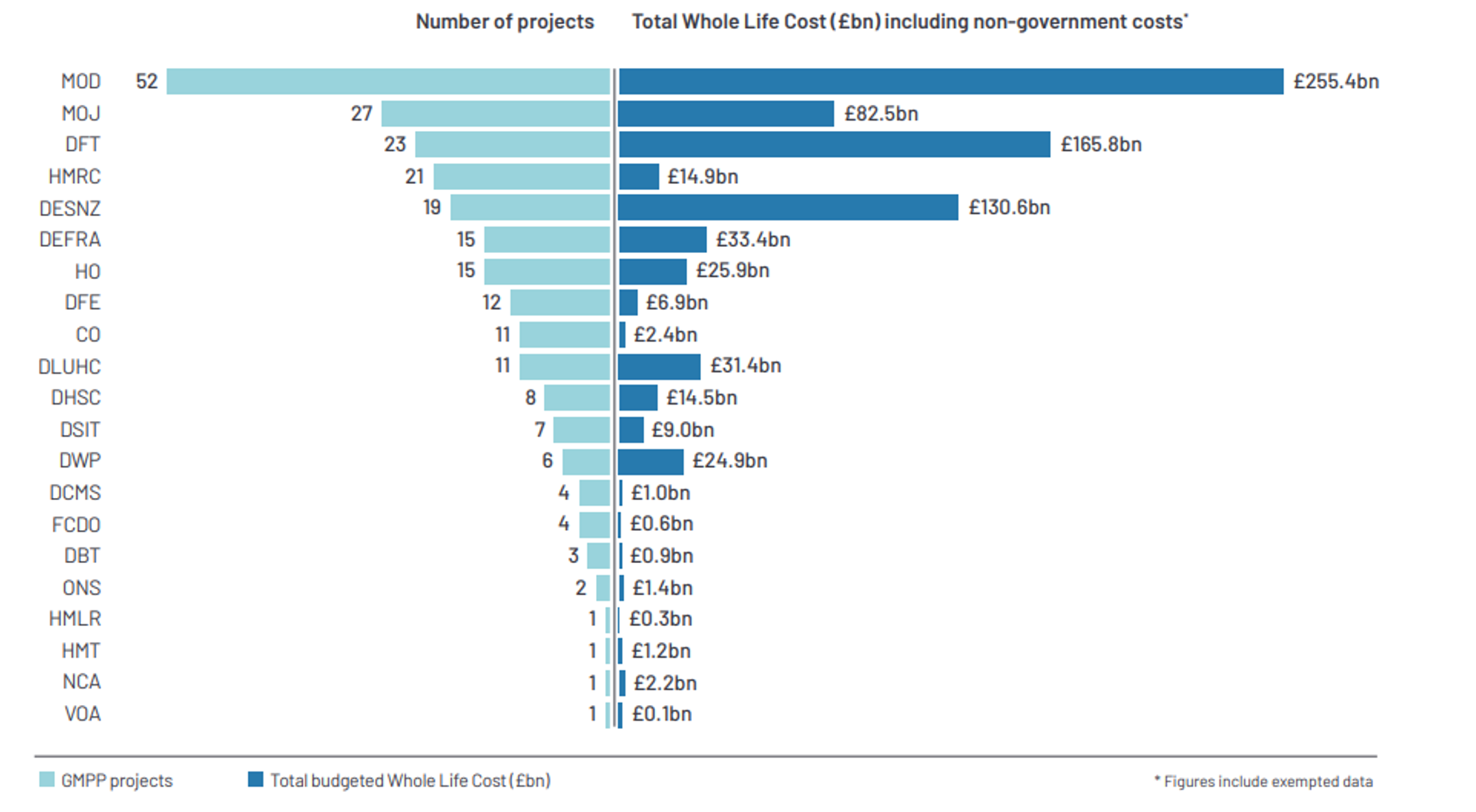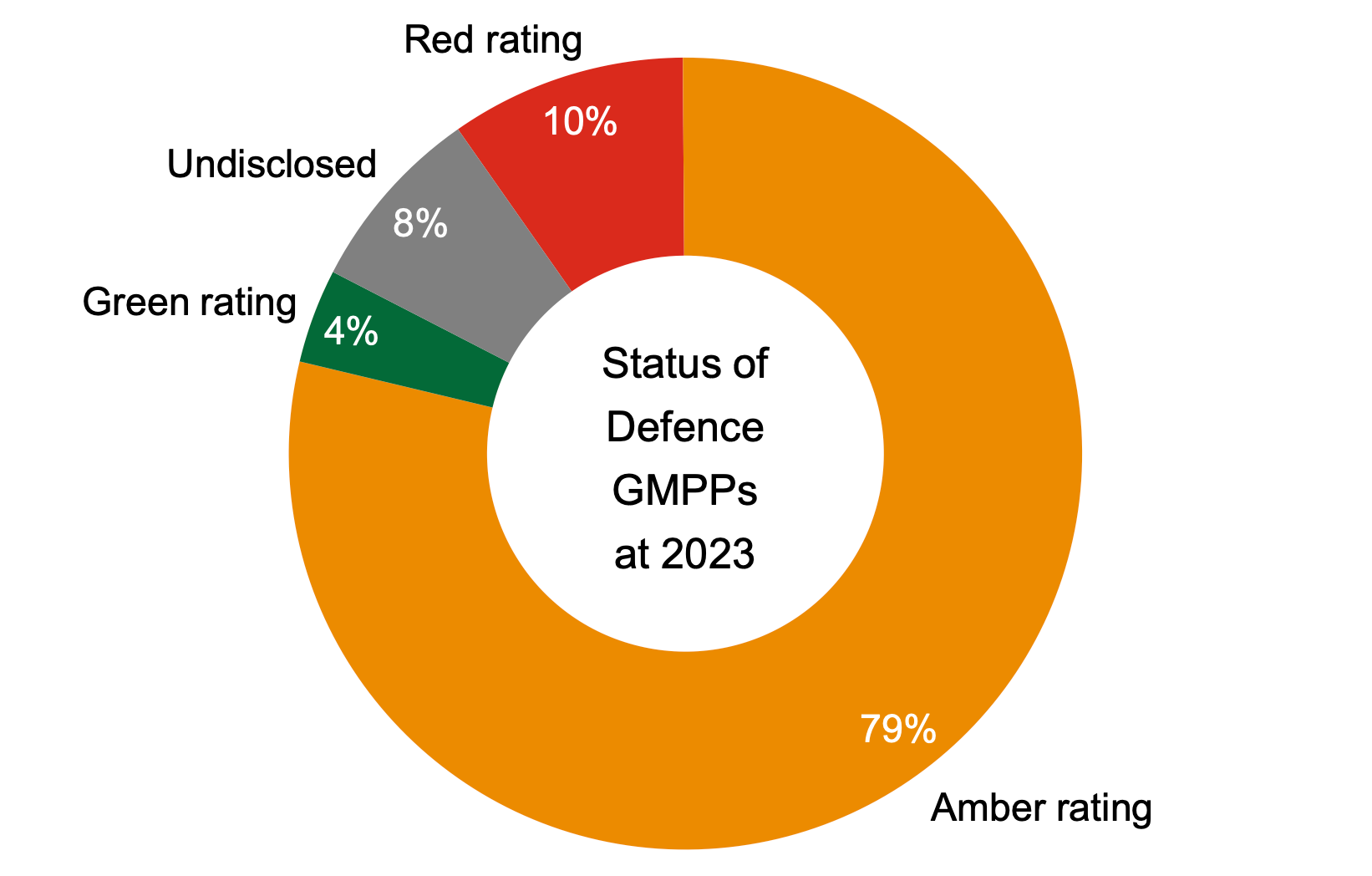Agile Acquisition & Rapid Delivery in Defence – Dealing with VUCA
- News Article
- Joint

 “We have gone from a competitive age to a contested and volatile world. Since March 2021, the threats and challenges we faced have manifested themselves, as have many of the technological advances predicted and our need to adapt faster to them if we are to continue outmatching our adversaries.”
“We have gone from a competitive age to a contested and volatile world. Since March 2021, the threats and challenges we faced have manifested themselves, as have many of the technological advances predicted and our need to adapt faster to them if we are to continue outmatching our adversaries.”
Rt Hon Ben Wallace and James Heappey, Defence Command Paper, 2023
Whitehall to the Commands. Defence acquisition and delivery
The purpose of Defence is, of course, to react, adapt and overcome. That job is executed by the Armed Forces. And supported through a chain of decision and action from Commands and from Whitehall – plans, commitments, incentives placed into people and supply chains.
Thus, agile acquisition and rapid delivery – a theme of Defence Security & Equipment International (DSEI) 2023 – is a ‘system’ challenge. And it is a challenge made increasingly acute because the whole endeavour is buffeted by volatility, uncertainty, complexity and ambiguity (VUCA) acting on our ways and means of delivery.
In this series of articles, we explore the topic of agile acquisition and rapid delivery in the context of VUCA. This is to contribute to the industry debate and the themes of the latest Defence Command Paper issued in July: Defence’s response to a more contested and volatile world.[1]
Instability and unpredictability are the salient features of current geopolitics. These features emerge from increasingly pressured government budgets, post-COVID adjustment, inflationary uncertainty, the next evolution of disruptive technology, military and supply chain shifts resulting from various sources of geopolitical tension in recent years.
In response, we see:
- New defence programmes. In this year’s Government Major Projects Portfolio (GMPP) list, the number of defence programmes has increased from 36 projects in 2021 to 52 in 2023.[2] They are now the most of any UK government department and double that in number of second placed (see Figure 1).
- Internationalised programmes. These mirror new geopolitical partnerships and the recognition that the cost of high-end defence acquisition needs to be shared. For example, AUKUS submarines, TEMPEST combat air, NSIGN global ships support – all seeking new thinking, across borders and globally.
- Variable performance. The number of defence programmes in “Red” or “Amber” status is substantive (see Figure 2). This is due to programmes drifting towards the limits of their cost and schedule approvals, but it is not wholly surprising given the context in which these programmes operate.
Figure 1: Number and value of GMPP programmes by Department

Source: Infrastructure & Projects Authority, 2023[3]
Figure 2: Defence GMPP programmes by status in 2023

Source: Infrastructure & Projects Authority, 2023
Context is everything. Dealing with VUCA and strategic risk
Context is everything. It is easy to criticise Defence for the variability in programme performance seen in Figure 2. Under-performance is not acceptable when one considers what is at stake in terms of military capability output. However, that variability can be explained (and thus addressed) when we recognise two causal factors.
Firstly, there is VUCA. The macro-level picture mentioned (i.e. geopolitics, disruptive tech) translates directly into large-scale acquisition and delivery programmes operating under VUCA. That uncertainty is corrosive of action, particularly the actions and commitments needed to drive long-term innovation. It makes planning harder as there becomes a need to keep options open, and it causes sponsors to forestall on key decisions – which is, in turn, costly if there are large industrial bases to service. It also creates risks of obsolescence, as long development timelines run alongside shifts in market and military relevance.
Secondly, there is non-transferrable, strategic risk. The MOD is the ‘lender of last resort’ in the largest, most critical programmes. Key areas of Defence are non-tradeable nor substitutable. There are few secondary markets for the Customer. So, if programmes falter in delivery, the strategic risk is often with the taxpayer. This can be seen through the sheer number of single-source programmes in maritime, nuclear and air.[3] There are limited sourcing opportunities across the sector, and even the need for direct government intervention in the sub-tier industrial base to support or take on what are otherwise commercial entities.4]
Achieving agile acquisition and rapid delivery is a systemic challenge that needs system-wide thinking and orchestrated action.
Responding to the agility and delivery challenge.
How can major defence programmes acquire with agility and deliver rapidly, when they operate within an increasingly volatile, uncertainty, complex and ambiguous (VUCA) environment?
If we break-down “VUCA”, there are several responses we have seen and where we have supported implementation in major defence programmes ranging from Dreadnought, Tempest, Complex Weapons, Land Equipment and Defence Intelligence. These responses are summarised in the table below:
Figure 3: Dealing with VUCA – some responses
 |
||
|
|
Volatility Where there is rapid change in an industry or market. Though there are fluctuations, e.g. in demand or available resources, these are well-understood and can be predicted. Examples: Price fluctuations in commodities that support defence supply chains, e.g. high-grade steel, semi-conductors, or changes in key skills / SQEP in engineering. Responses:
|
Uncertainty Where events’ basic causes are known, but due to a lack of information it is hard to predict how things will pan out. Responses:
|
|
Complexity Where many interconnected factors act on a situation. Information is available and can be predicted, but the sheer number of linkages can be overwhelming to manage through set processes. Examples: Acquisition of complex products, e.g. Submarine acquisition, or the provision of support across defence lines of development (DLODs) to platforms. Responses:
|
Ambiguity Where there are many ‘unknown unknowns’, lack of precedent, limited information or contradicting information on cause-effect that make the situation hard to discern. Responses:
|
Source: Deloitte analysis and with reference to HBR, Bennett & Lemoine[5]
Figure 3 shows how major defence programmes need to consider VUCA in its component parts, as the responses can vary.
At Deloitte, we employ a “VUCA Diagnostic Tool”, used extensively both in Defence and other GMPPs. This identifies specific capabilities and initiatives for calibrating major programmes based on their VUCA profile, some tagged in Figure 3.
Moreover, if we consider those programmes as a ‘whole system’, they need orchestration based on three major moves. Major defence programme succeed when they:
- Bring government and industry together in collaborative constructs that ‘partner for success’;
- Build the capability to look forwards, to ‘scan for failure’ and actively manage the future; and
- Nurture resilient teams that recognise human dynamics in harnessing digital means.
1 Defence Command Paper 2023: Defence’s response to a more contested and volatile world - GOV.UK (www.gov.uk)
2 IPA-Annual-report-2022-2023.pdf (publishing.service.gov.uk)
3 There are 535 single-source contract to the UK MOD classed as Qualifying Defence Contracts or Sub-Contracts by the Single Source Regulation Office in 2023 at a total contract price of £84Bn (SSRO, link)
4 For example, HMG’s acquisition of Sheffield Forgemasters International Ltd in 2021
5 What VUCA Really Means for You (hbr.org)
AUTHOR DETAILS:

Priyen Patel - Partner priypatel@deloitte.co.uk
Dominic Cook - Partner dccook@deloitte.co.uk
© 2023 Deloitte LLP. All Rights Reserved. The contents of this article are confidential and the intellectual property of Deloitte LLP and may not be reproduced, redistributed or passed on to any other person in whole or in part without the prior written consent of Deloitte.
This publication contains general information only, and none of the Deloitte member firms are by means of this publication, rendering professional advice or services. Before making any decision or taking any action that may affect your business, you should consult a qualified professional adviser.
-
The old adage goes: “plan for failure, but hope for success.” Yet, defence programmes are much too important and complex for static plans prosecuted through hopes and wishes. Defence programmes need t ...
-
Defence organisations are being challenged to upskill and reskill against a backdrop of talent scarcity and changing worker expectations. Shifting towards a skills-based workforce approach provides a ...
-
Breaking Silos in Defence: DSEI 23 Joint Zone Set to Display Latest Innovations Across Domains
24 Aug 2023Effective defence operations rely on the seamless integration of technology, communication and processes across domains and forces nationally and internationally. In an age of rapid technological inno ... -
British Army Reshapes Training in line with Ukraine Lessons
10 Aug 2023 Army TechnologyThe Army’s exercise Iron Cyclone re-generates “basic skills and mastering combined arms competency” for the modern warfare observed in Ukraine. The British Army is “regenerating basic skills and maste ... -
The Defence and Security Equipment International (DSEI) event has always been a cornerstone for global defence and security discussions. This year, DSEI 2023 is no exception. With the theme 'Achieving ...
-
Defence and Security Equipment International (DSEI) returns to ExCeL London this year from 12th-15th September. The event is set to host prominent companies in the defence field from over 50 countries ...


)
)
)
)
)
)

